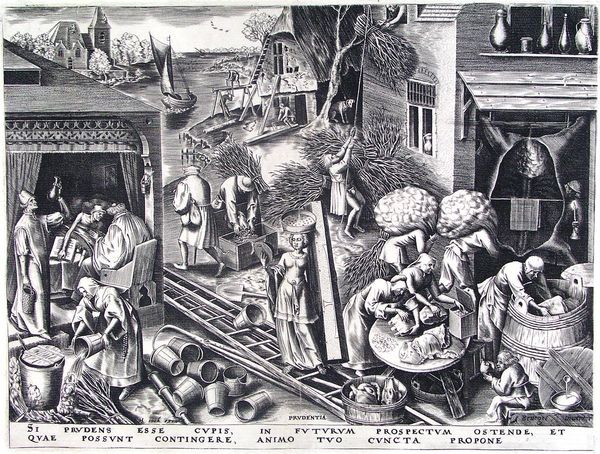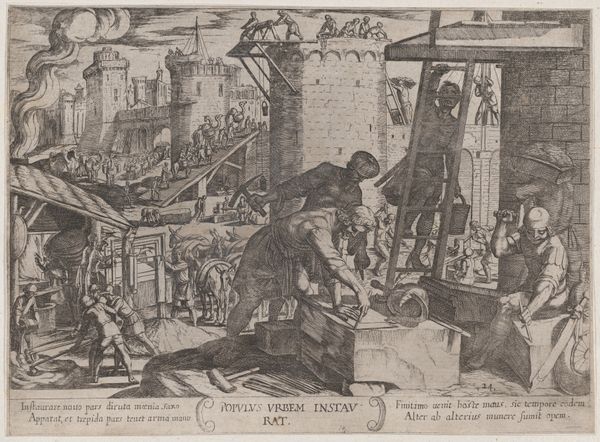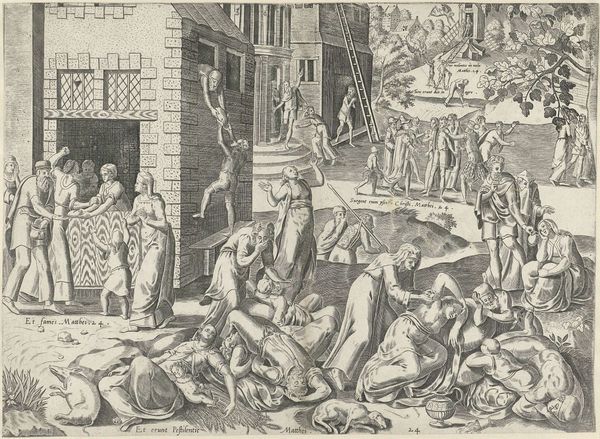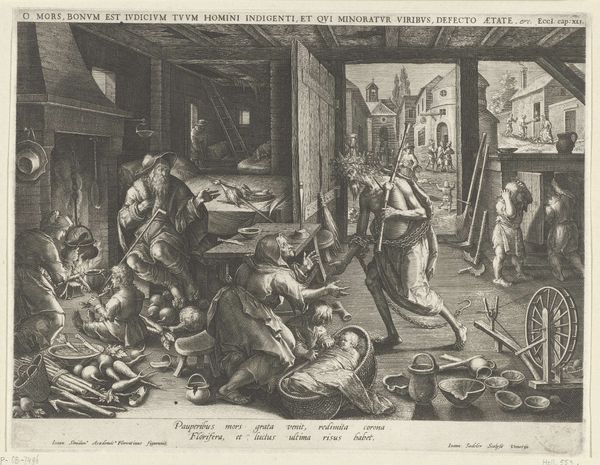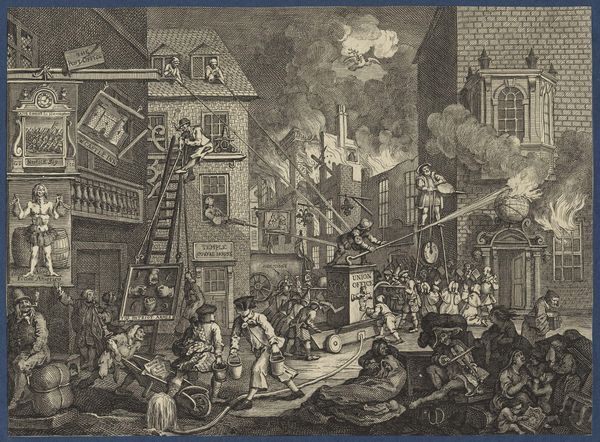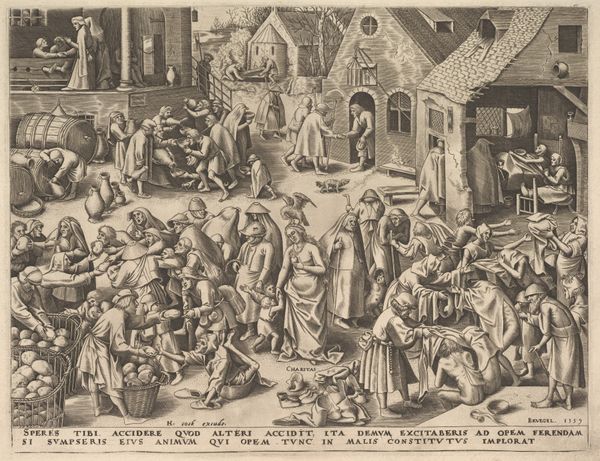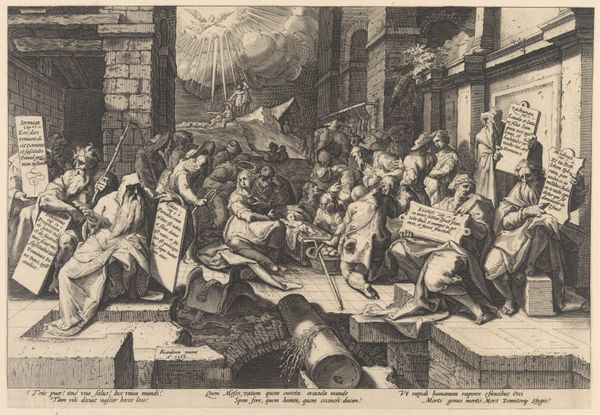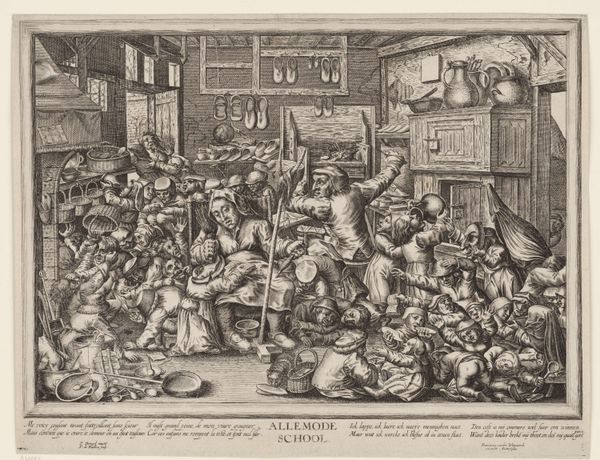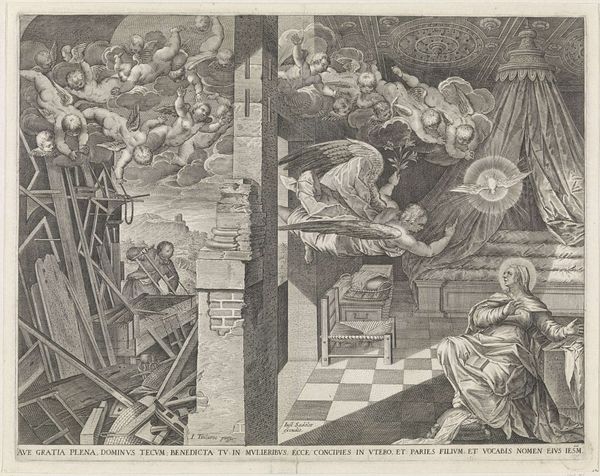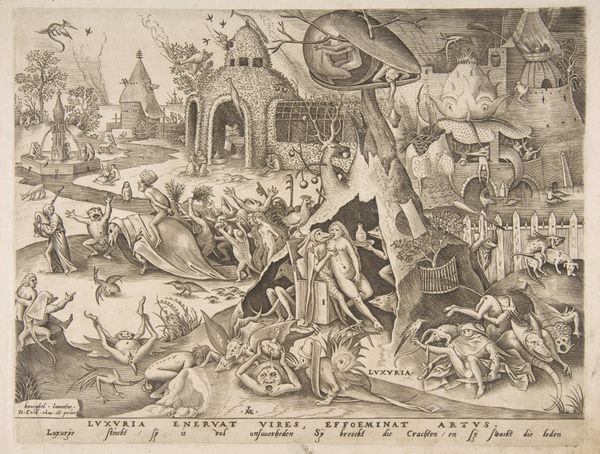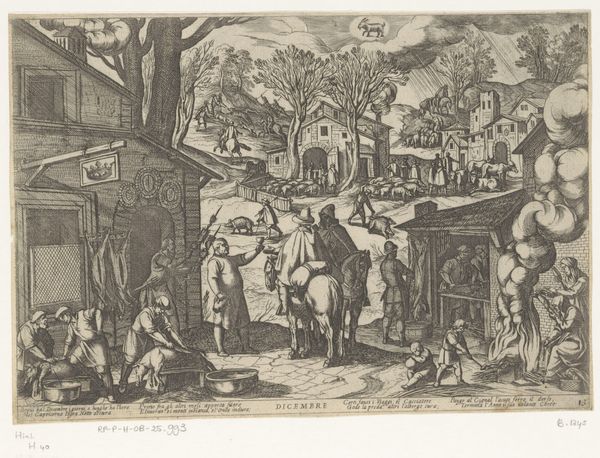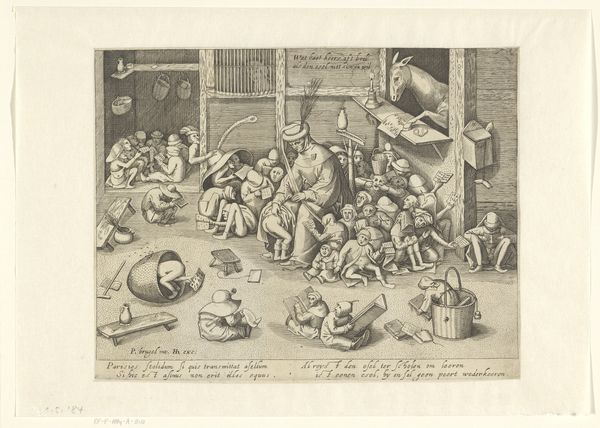
drawing, print, engraving, architecture
#
drawing
#
allegory
# print
#
landscape
#
figuration
#
history-painting
#
northern-renaissance
#
engraving
#
architecture
Dimensions: Sheet: 10 1/4 x 13 3/16 in. (26.1 x 33.5 cm) Plate: 8 11/16 x 11 5/8 in. (22 x 29.5 cm)
Copyright: Public Domain
Philips Galle created "Prudence" in the late 16th century, a period marked by significant social and economic changes in Europe. Galle, situated in the heart of the printmaking boom in Antwerp, capitalizes on his moment in visualizing and disseminating cultural values. Here, the engraving presents an allegorical representation of prudence, a virtue highly valued in Renaissance society. Galle depicts this virtue not as an abstract concept, but as a series of practical actions related to labor and industry. The scene is filled with figures engaged in various tasks, from harvesting and storing goods to overseeing trade, emphasizing the importance of foresight and diligence in managing resources. The engraving also touches on themes of social hierarchy and gender. The figures performing manual labor are rendered anonymously, while the central figure of Prudence, a woman, stands as an overseer, embodying the ideal of rational governance. This resonates with broader societal expectations of women to embody moral virtues, while also subtly reinforcing their exclusion from direct involvement in economic activities. "Prudence" reflects how societal values were visualized and circulated, shaping contemporary understandings of gender, class, and labor.
Comments
No comments
Be the first to comment and join the conversation on the ultimate creative platform.

